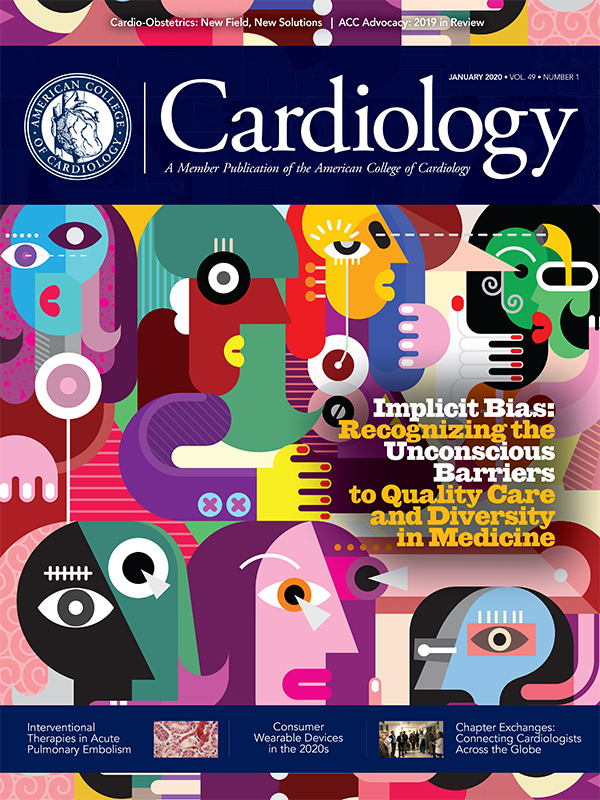JACC in a Flash
Featured topics and Editors' Picks from all of ACC's JACC Journals.
JACC and Family: The Top Five in 2019
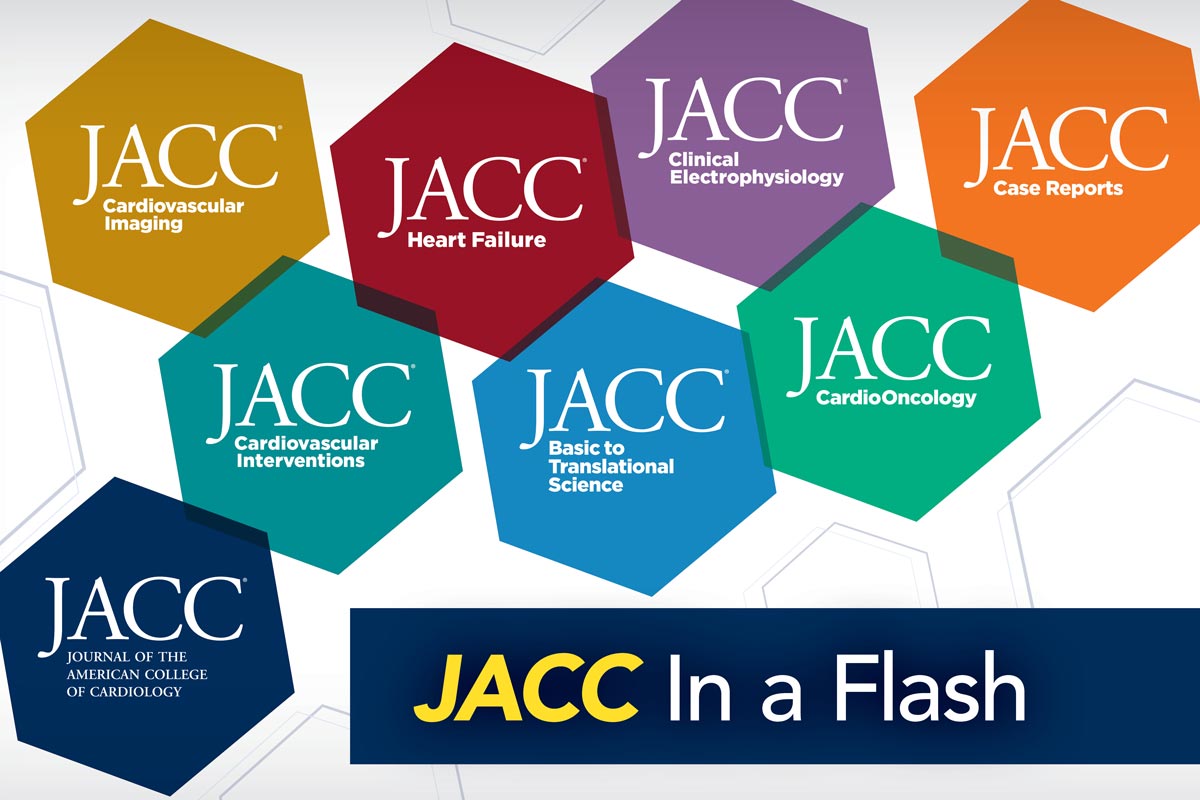
The five most read articles online from the Journal of the American College of Cardiology (JACC) include two on nutrition, two review articles and one original investigation looking at the impact of sleep on atherosclerosis.
Don't miss the top five articles from JACC: Clinical Electrophysiology; JACC: Heart Failure; JACC: Cardiovascular Imaging; JACC: Cardiovascular Interventions; JACC: Basic to Translational Science; JACC: Case Reports and JACC: CardioOncology.
- Association of Skipping Breakfast With Cardiovascular and All-Cause Mortality
- Type 2 Myocardial Infarction
- Association of Sleep Duration and Quality With Subclinical Atherosclerosis
- Management of Antithrombotic Therapy in Atrial Fibrillation Patients Undergoing PCI
- Chili Pepper Consumption and Mortality in Italian Adults
Visit JACC.org/MostRead to read these articles and the Top Five articles from each JACC specialty journal and click here to check out the most talked about JACC articles of 2019.
Reduced BP, Arterial Stiffness Seen in First-Time Marathon Runners
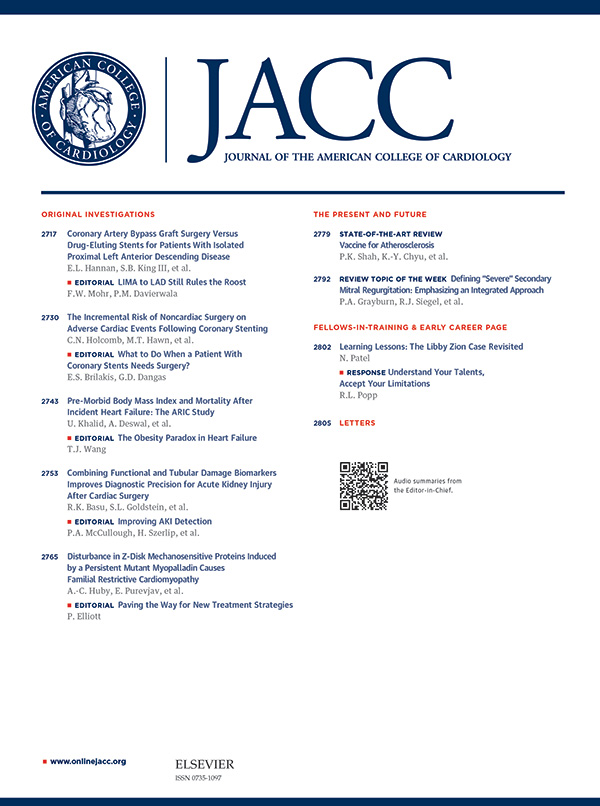
Training for and running in a first marathon may be associated with reductions in blood pressure (BP) and aortic stiffening in healthy participants that are equivalent to a four-year reduction in vascular age, according to research published in the Journal of the American College of Cardiology. The greatest benefits were seen in older, slower male marathon runners with higher baseline BP.
Anish N. Bhuva, MBBS, et al., examined a cohort of 138 healthy, first-time marathon runners from the 2016 and 2017 London Marathon. The researchers examined the participants before training and after marathon completion to determine if age-related aortic stiffening would be reversible with real-world exercise training.
Participants had no significant past medical or cardiac history and were not running for more than two hours per week at baseline. On average, participants were 37 years old and 49 percent were male. Exclusion criteria included preexisting heart disease during the preliminary investigations or contraindication on a cardiovascular MRI.
All participants were recommended to follow the "Beginner's Training Plan" provided by the marathon, consisting of approximately three runs per week that increase in difficulty for a 17-week period prior to the marathon.
However, the researchers did not discourage participants who wished to use alternative training plans. The average marathon running time was 5.4 hours for women and 4.5 hours for men. When compared with training data and marathon completion times from 27,000 runners, these times were found to be consistent with a training schedule of six to 13 miles per week.
Results showed that training decreased systolic and diastolic BP by 4 and 3 mm Hg, respectively. Overall, aortic stiffness reduced with training and was most pronounced in the distal aorta with increases in distensibility of 9 percent. This amounted to the equivalent of almost a four-year reduction in 'aortic age.'
Older patients had greater changes with exercise training, with men and those running slower marathon times deriving greatest benefit. The authors note that although the study only recruited healthy participants, those with hypertension and stiffer arteries might be expected to have an even greater cardiovascular response to exercise training.
"Despite some limitations, including its observational nature, the study adds to the body of evidence supporting beneficial effects of exercise on multiple aging phenotypes," says Julio A. Chirinos, MD, PhD, in an accompanying editorial comment.
"Given the profound implications of arterial stiffness for human health, this study is important and should stimulate further research to identify potential molecular mechanisms by which exercise reduces aortic stiffness. In addition, training for marathons usually involves various concomitant approaches such as better sleep and dietary patterns, and in some instances, over-the-counter supplements, that may confound or interact with exercise training per se. More research to identify optimal integrated training regimens is needed."
Bhuva AN, D'Silva A, Torlasco C, et al. J Am Coll Cardiol 2019;75:60-71.
Review Looks at Management of HTN in Cancer Patients
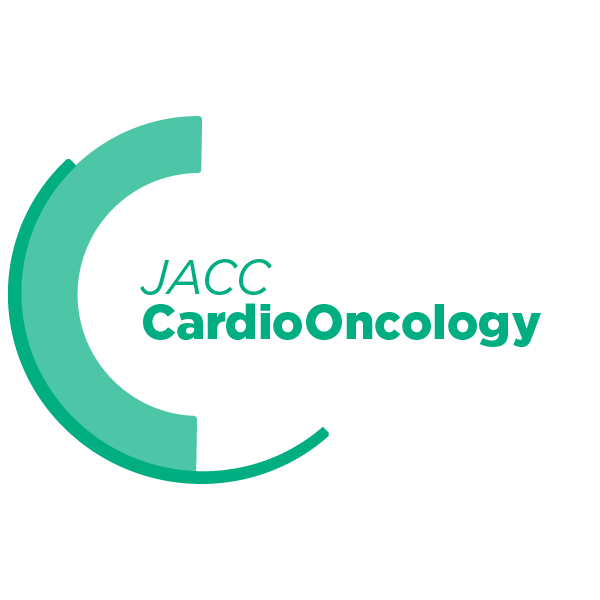
In the absence of high-quality evidence, individualized monitoring and treatment of hypertension in cancer patients and survivors may be paramount, according to a state-of-the-art review published in JACC: CardioOncology.
Jordana B. Cohen, MD, MSCE, et al., provide a call for action for improved hypertension identification, treatment and control among cancer patients to reduce cardiovascular risk.
They note that treatment with chemotherapy is an independent risk factor for hypertension due to direct effects of many agents on endothelial function, sympathetic activity and renin-angiotensin system activity, as well as nephrotoxicity.
The authors explain that diagnosis and management of hypertension in cancer patients requires accurate blood pressure measurement and consideration of potential confounding factors – like adjuvant treatments and acute pain – that can temporarily elevate blood pressure readings.
Furthermore, the authors note that home blood pressure monitoring can be a useful tool to facilitate longitudinal blood pressure monitoring for titration of antihypertensive medications. They add that the selection of antihypertensive agents in cancer patients should account for treatment-specific morbidities and target organ damage.
"There is a paucity of data on the benefit of blood pressure treatment in cancer patients with regard to cardiovascular risk reduction," the authors conclude. "Future studies are needed to identify optimal treatment targets and therapies for the management of hypertension in this patient population."
In an accompanying editorial comment, Françoise A. Marvel, MD, et al., write that "it is critical to individualize hypertension management for cancer patients by accurately estimating their cardiovascular risk, type of cancer, oncological therapies, adjuvant medications and pain level when initiating lifestyle modification and antihypertensive medications."
They add, "In the future, cardio-oncology-focused cardiac rehabilitation and mobile health tools may be a new approach to improving cardiovascular risk management."
Cohen JB, Geara AS, Hogan JJ, et al. JACC CardioOnc 2019;1:238-51.
Peripartum Cardiomyopathy and Increased Cancer Risk Before, After Cardiac Diagnosis

Patients with peripartum cardiomyopathy (PPCM) were more likely to have cancer before PPCM diagnosis and more likely to develop cancer after PPCM when compared with cancer prevalence rates of women in the same age group, according to a study published in JACC: CardioOncology. Tobias J. Pfeffer, MD, et al., studied 236 German and Swedish PPCM patients.
Exome sequencing assessed variants in 133 genes associated with cancer predisposition syndromes (CPS) and in 115 genes associated with dilated/hypertrophic cardiomyopathy (DCM/HCM) in 14 PPCM patients with a history of cancer, and in six PPCM patients without a history of cancer.
Researchers saw a nine-fold higher cancer occurrence prior to diagnosis of PPCM and a nine-fold higher risk of cancer after diagnosis of PPCM compared with age-matched women without PPCM. Cancer before PPCM occurred in 12 of 21 patients, 11 of whom obtained cardiotoxic cancer therapies.
Full recovery of cardiac function was observed in 17 percent of these patients by seven months of follow-up vs. 55 percent of PPCM patients without cancer. Cancer occurred after PPCM in 10 of 21 patients and 80 percent had left ventricular ejection fraction ≥50 percent after cancer therapy.
According to the researchers, their findings show cancer therapy and/or gene variants associated with cancer predisposition syndromes and DCM/HCM may link PPCM and cancer.
They recommend prepregnancy echocardiographic screening and counseling as well as close monitoring during pregnancy and postpartum for patients with a history of cancer and especially for patients treated with cardiotoxic cancer therapy.
They add that PPCM patients should also be screened for cancer during follow-up, due to their increased risk.
In an accompanying editorial comment, Jean-Luc Balligand, MD, PhD, notes, "These observations may well have far-reaching implications, not only for the understanding of the pathogenic mechanisms of PPCM and cancer development in patients with heart failure, but also for the clinical care of women with a history of PPCM or cancer who become pregnant."
Pfeffer TJ, Schlothauer S, Pietzsch S, et al. JACC CardioOnc 2019;1:196-205.
Cardio-Oncology Council Perspective: CV Assessment During CAR T-cell Therapy

As chimeric-antigen receptor (CAR) T-cell therapy expands to a wider patient population, careful patient selection, pretreatment cardiac evaluation and cardiovascular risk stratification may need to be considered within the CAR T-cell treatment protocol, according to a perspective from ACC's Cardio-Oncology Council published in the Journal of the American College of Cardiology.
Sarju Ganatra, MD, et al., describe the cardiovascular manifestations of cytokine release syndrome (CRS) – the main adverse effect of CAR T-cell therapy – and present a practical approach to cardiovascular assessment and management during CAR T-cell therapy. They add that clinical cardiovascular manifestations of CRS may include tachycardia, hypotension, troponin elevation, reduced left ventricular ejection fraction, pulmonary edema and cardiogenic shock.
Although insults related to CRS toxicity may be transient and reversible in patients with adequate cardiovascular reserve, they can be particularly challenging in higher risk, often elderly patients with preexisting cardiovascular disease. The authors emphasize defining a cardiovascular surveillance strategy during treatment to mitigate life-threatening CRS.
The authors explain a best practice approach including systematic but selective assessment of cardiovascular clinical symptoms, cardiac biomarkers and imaging-based indices of cardiac function should be implemented to enhance understanding of cardiotoxicity during and after CAR T-cell therapy.
"Toxicity is currently a major barrier to more effective CAR T-cell therapies, and ongoing efforts seek to better understand toxicities and design safer CAR T-cells," the authors conclude. Moving forward, "multi-institutional collaboration with creation of geographically broad-based registries will be needed to inform evidence-based practice guidelines that optimize CAR T-cell therapy and patient outcomes."
Ganatra S, Carver JR, Hayek SS, et al. J Am Coll Cardiol 2019;74:3153-63.
A Case For Support For Breastfeeding Cardiology Fellows
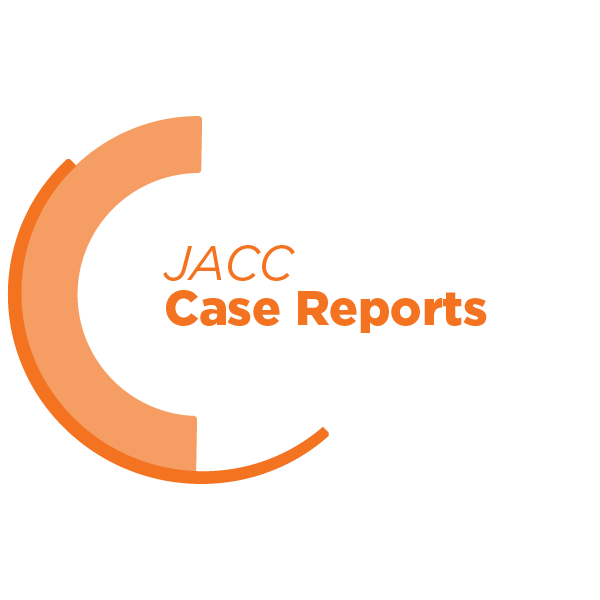
"Cardiovascular medicine is among the most gender-imbalanced medical specialties in the U.S. Over the last 12 years, the proportion of women in U.S. cardiology fellowship programs has remained stagnant around 20 percent," write Jenna Kay, MD, FACC; Nosheen Reza, MD; and Frank E. Silvestry, MD, FACC, in a "Voices in Cardiology" article published in JACC: Case Reports. Among the top factors contributing to this imbalance: inadequate workplace support for pregnant and nursing cardiologists.
Using the Perelman School of Medicine at the University of Pennsylvania's Division of Cardiovascular Medicine as an example, Kay, Reza and Silvestry highlight how a set of behavioral and practice guidelines for lactating fellows, written by fellows in training and early career faculty, are helping to minimize workplace obstacles and build a culture of support for new mothers.
The guidelines outline some of the challenges faced by breastfeeding fellows, as well as the typical amount of time for pumping and the minimum requirements necessary for pumping spaces (i.e., cleanliness, privacy, refrigeration capabilities, and availability of a telephone and computer for performing clinical work).
"We have experienced success with our Guidelines for Wellness of Breastfeeding Cardiology Fellows, and this initiative is embedded in a larger ongoing programmatic effort to advocate for adequate and paid maternity and paternity leaves, widely disseminate medical specialty board and existing health system policies on leave and extensions of training, and ensure occupational radiation safety," they write.
"By cultivating a culture of openness and acceptance for new and future parents, we hope that continued efforts such as ours help support trainees as well as attract and retain more women as future generations of cardiologists."
Kay J, Reza N, Silvestry FE. JACC Case Reports 2019;1:680-3.
JACC: CardioOncology Research Unpacks Challenges, Innovation in Israel

Israel has made considerable advances in cardio-oncology during the past six years, according to an international perspective paper published in JACC: CardioOncology.
However, Zaza Iakobishvili, MD, PhD, and Dan Gilon, MD, FACC, explain that due to an increase in cancer survivors, there is an increased demand for specialized services, specifically due to heart and vascular disease burdens inflicted by cancer on the human body.
Currently, there are more than 800 active cardiologists in Israel, and all oncology services are provided mostly by 180 hospital-based medical oncologists.
Challenges that remain to be overcome include cardio-oncology education, awareness of cardiovascular health by cancer survivors and their caregivers, disease management programs and more, according to the authors.
Iakobishvili Z, Iakobishvili D. JACC CardioOnc 2019;1:331-3.
Clinical Topics: Arrhythmias and Clinical EP, Cardio-Oncology, Cardiovascular Care Team, Diabetes and Cardiometabolic Disease, Heart Failure and Cardiomyopathies, Invasive Cardiovascular Angiography and Intervention, Noninvasive Imaging, Prevention, SCD/Ventricular Arrhythmias, Atrial Fibrillation/Supraventricular Arrhythmias, Acute Heart Failure, Heart Failure and Cardiac Biomarkers, Interventions and Imaging, Interventions and Structural Heart Disease, Echocardiography/Ultrasound, Magnetic Resonance Imaging, Exercise, Hypertension
Keywords: ACC Publications, Cardiology Magazine, Acute Pain, Antihypertensive Agents, Aorta, Atrial Fibrillation, Biomarkers, Pharmacological, Atherosclerosis, Blood Pressure, Blood Pressure Determination, Blood Pressure Monitoring, Ambulatory, Capsicum, Cardiac Rehabilitation, Cardiomyopathy, Dilated, Cardiomyopathy, Hypertrophic, Cardiotoxicity, Cardiovascular Diseases, Caregivers, Cohort Studies, Clinical Protocols, Counseling, Evidence-Based Practice, Echocardiography, Exercise, Exome, Faculty, Fellowships and Scholarships, Follow-Up Studies, Fibrinolytic Agents, Hypertension, Heart Failure, Hypotension, Immunotherapy, Adoptive, Internationality, Lactation, Magnetic Resonance Imaging, Life Style, Medicine, Myocardial Infarction, Neoplasms, Neoplasms, Parents, Parental Leave, Patient Selection, Percutaneous Coronary Intervention, Peripartum Period, Postpartum Period, Phenotype, Prevalence, Privacy, Pulmonary Edema, Registries, Renin-Angiotensin System, Risk Factors, Social Responsibility, Shock, Cardiogenic, Stroke Volume, Specialty Boards, Syndrome, Systole, Tachycardia, Telemedicine, Troponin, T-Lymphocytes, Vascular Stiffness
< Back to Listings

